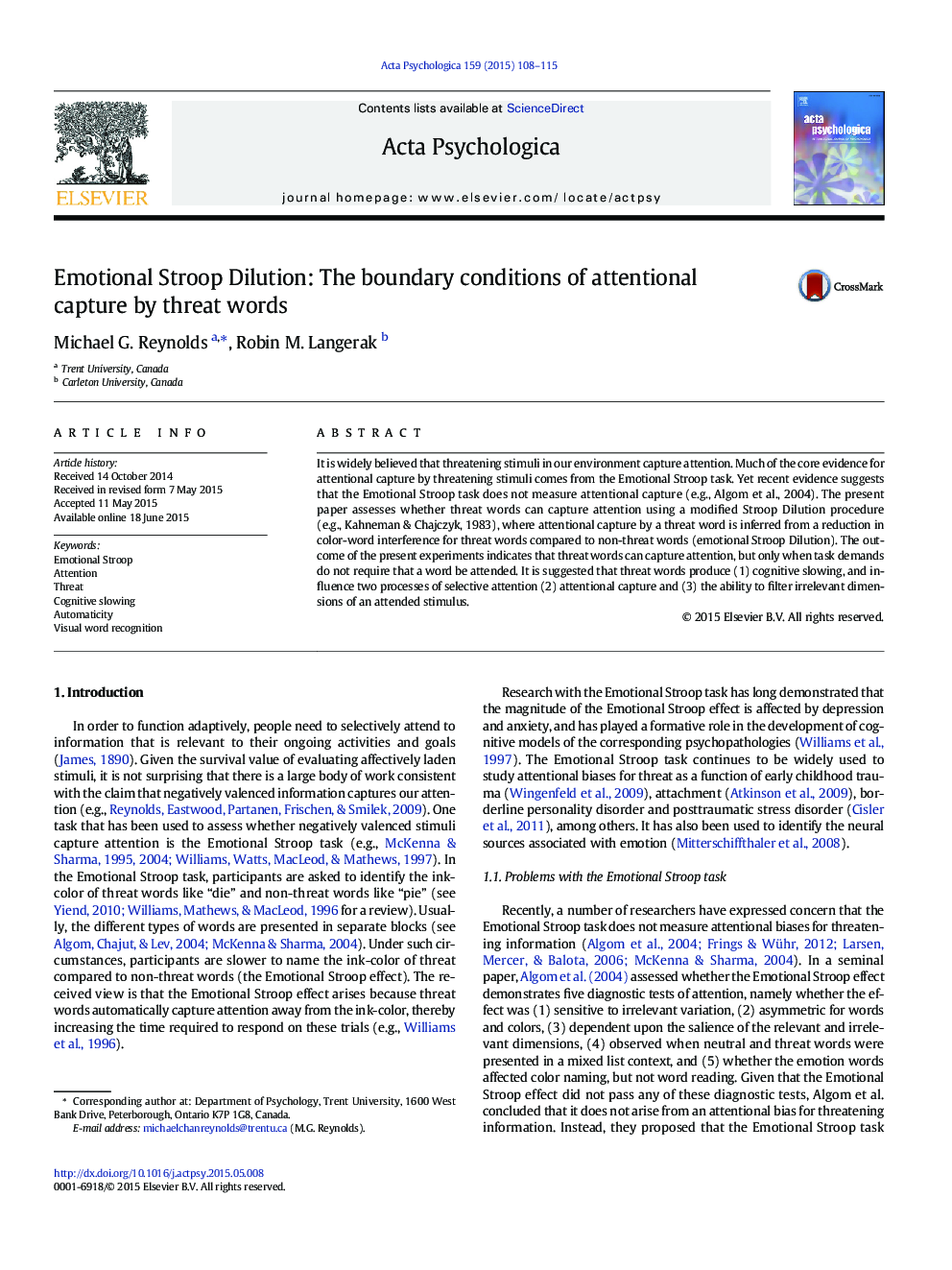| Article ID | Journal | Published Year | Pages | File Type |
|---|---|---|---|---|
| 919721 | Acta Psychologica | 2015 | 8 Pages |
•Three experiments examine whether the Stroop effect changes in the presence of threat words.•Threat and non-threat contexts are randomly intermixed.•Used a large sample of matched threat and nonthreat words.•Evidence of attentional capture separate from filtering and cognitive slowing.•Attentional capture is affected by a limited capacity processing mechanism.
It is widely believed that threatening stimuli in our environment capture attention. Much of the core evidence for attentional capture by threatening stimuli comes from the Emotional Stroop task. Yet recent evidence suggests that the Emotional Stroop task does not measure attentional capture (e.g., Algom et al., 2004). The present paper assesses whether threat words can capture attention using a modified Stroop Dilution procedure (e.g., Kahneman & Chajczyk, 1983), where attentional capture by a threat word is inferred from a reduction in color-word interference for threat words compared to non-threat words (emotional Stroop Dilution). The outcome of the present experiments indicates that threat words can capture attention, but only when task demands do not require that a word be attended. It is suggested that threat words produce (1) cognitive slowing, and influence two processes of selective attention (2) attentional capture and (3) the ability to filter irrelevant dimensions of an attended stimulus.
